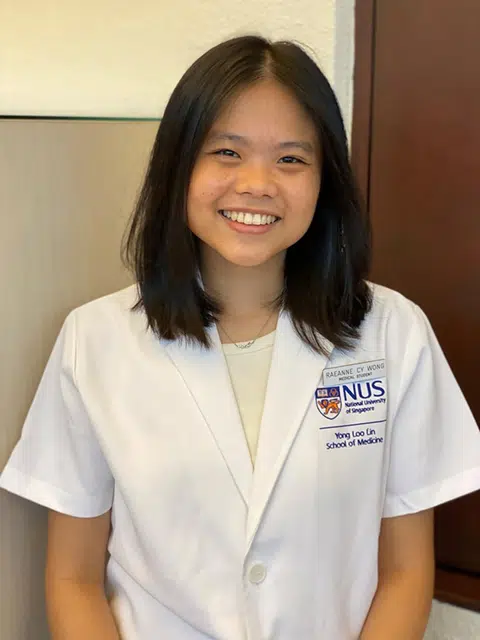NUS medical school sees record 60% female intake in 2024
More than two decades after lifting the quota on female undergraduates, the National University of Singapore medical school welcomed its largest proportion of women in 2024.
In response to queries from The Straits Times, the Yong Loo Lin School of Medicine said 173 of the 286 freshmen who enrolled in 2024 - about 60 per cent - are female.
The school said while this is the "highest proportion to date", it remains consistent with the trend over the past few years, when more than 50 per cent of the students admitted into medicine have been female.
For years, since 1979, when a quota capping female students to a third in medicine was imposed, the undergraduate population of the school was male-dominated. But just three years after the quota was lifted in 2003, the proportion of female students rose to about 50 per cent.
The quota was set in 1979 on the rationale that the proportion of women doctors who did not work, or worked only part-time, was higher than for men, and it was costly to train a medical student.
However, the quota was scrapped as more female doctors remained in their jobs over the years.
Nanyang Technological University, which also offers an undergraduate degree in medicine, also reported a higher proportion of female students in 2024, with 50 per cent of the 186 places going to them. The Lee Kong Chian School of Medicine, which took in its first batch of students in 2013, said this is slightly higher than in the past three years, when female students typically made up about 45 per cent of the cohort.
NUS figures also show that more than 90 per cent of the 2024 intake into medicine consists of those from junior colleges (JCs), coming from a similar range of JCs as in previous intakes.
Polytechnic graduates continue to be among the cohort accepted into NUS Medicine, with five admitted in 2024. Generally, fewer than 10 are accepted each year, although the highest number of polytechnic graduates in a single cohort was 21 in 2022.
The school also said that four students in 2024 were from the School of the Arts (Sota), the highest number thus far, while one student was from the Singapore Sports School.
When asked about the high proportion of female students, Professor Chong Yap Seng, dean of the school, said its students hail from a variety of backgrounds as they are assessed on their individual academic merits, character and values, regardless of the institution they come from.
He said that NUS Medicine does not set numbers on how many female or male students it admits or how many should be from the different pathways, such as JCs or the polytechnics, which is why numbers do fluctuate.
He stressed: "The school's focus remains on selecting candidates who demonstrate the potential to become the best doctors. They are shortlisted through interviews and other tests, so that we select those who have the potential to become caring, competent and compassionate doctors. Over the years, we have seen students enter the school from increasingly diverse pathways."
The school also said that candidates who may not fulfil the academic requirements but possess strong values and attributes for a career in medicine are also invited to apply through the school's Aptitude-Based Admissions Scheme (Abas), and they will be considered for shortlisting in the admissions exercise.
Out of the 220 students considered for Abas in 2024, 14 students were accepted into NUS Medicine.
Sota alumna Raeanne Wong Chien Yin, 19, one of the women who enrolled in NUS medicine in 2024, welcomed the record number of female students admitted.
She said: "It is a testament to the progress our society has made in recognising female strengths, rooted in the knowledge that females have much to offer to the medical fraternity. And, I do not take this for granted. Just slightly more than two decades ago, there was a one-third quota on females. Twenty years down the road, female representation has almost doubled."
Asked about her interest in medicine, she said the "defining moment" came one day when she was singing to raise funds for patients with muscular dystrophy.
"The songs soothed; but the patients remained limited by their condition, which was set to worsen. I wanted to do more to help, but it was beyond me. Something stirred within me in that instant, and I began to seriously consider pursuing medicine."

Duke-NUS, which offers a postgraduate programme in medicine, said the proportion of female students has been going up over the years, with it reaching 65.3 per cent in 2023, before dipping in 2024 to 59 per cent.
On average, over 50 per cent of its incoming cohorts have been women.
It said the growing trend of higher female representation in medicine is observed globally, including in institutions such as Duke University in Durham, North Carolina, underscoring a shift towards greater gender diversity in medical education.
A spokesman for Duke-NUS welcomed the trend, adding: "One of our key value-adds is the diversity of our student body, including academic backgrounds, life experiences and gender. Not long ago, the number of women in medical school in Singapore was severely limited, so this trend may help achieve the gender diversity we strive for in our medical community."
Medical schools in the US and Britain attribute the increase in female students to the lifting of quotas in some countries, and a shift in societal norms that allows women to pursue careers in medicine more freely.
They also report a growing recognition that diverse perspectives and experiences are essential for effective healthcare delivery, and that gender diversity in the medical profession is important for improving patient outcomes.
Sandra Davie for The Straits Times